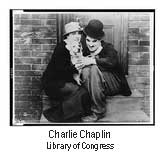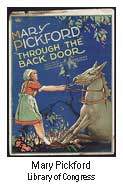We’ve Come A Long Way Baby… Or Have We?
The view of women in film has shifted over its more than 100-year history. In 1905, the name of the actress was not printed on movie posters. Charlie Chaplin said that women were not important in his films. He had only met one or two actresses who were his equal, he said. The names of actresses were not even listed in early film credits. That was to change.

An early film periodical, The Motion Picture Story Magazine, got an inquiry asking who the “little lady” was whom they had mentioned in a previous issue. In the magazine’s Letters Column, the answer appeared that it was the “Biograph Girl,” Florence Lawrence. Legend has it that the questioning letter was actually from the Motion Picture Story’s rival publisher, Vitograph. Nevertheless, Biograph apparently used this opportunity as a PR stunt.
Actress Mary Pickford, the Biograph Girl’s successor, dominated film from 1914 to 1924. Pickford was able to force the male company presidents to yield to her salary demands. She wanted a salary higher than, not merely equal to, that of Charlie Chaplin. With her golden curls and feminine appeal of “Little Mary,” they gave in. Pickford obviously had made the connection between the studios’ attempts to keep their female actresses virtually anonymous, and their desire to keep those same actresses’ salaries equally unremarkable.

But, Pickford obviously was an exception in the movie industry. Flash forward to “Lights of Sante Fe”, 1944. At the top in large bold letters, Roy Rogers and Trigger the Wonder Horse are given star billing. At the bottom of the page in letters about half the size, Gabby Hayes is given credit. Under that line in still smaller print, we find Dale Evans.
Trying to figure out where we are now is not so simple. In 2001, men worked twice as many days as women in live theater and TV productions. Men held 62 percent of roles. Women over forty years of age had 27 percent of female roles and just 10 percent of all roles. There is no cut-off age for men. You can cast a 50-year-old actor with a 30-year-old actress and it works. For women, the cut-off point is age 35.
Basically, it comes down to return on investment for the studios. If the actress proves to be a big draw, the studio will run with her. “Erin Brockovich,” 2000, featuring Julia Roberts, had a $125.6 million take. Roberts got the best actress Oscar that year. In 2001, “The Princess Diaries”, with Anne Hathaway and Julie Andrews; “Legally Blonde”, featuring Reese Witherspoon; “The Others”, with Nicole Kidman, and “Lara Croft; Tomb Raider”, starring Angelina Jolie, each grossed about $100 million.
My Big Fat Greek Wedding, 2002, was shot on a budget of $5 million with a box of $241 million. It starred Nia Vardalos as Toula. The implications of the movie are important. A low budget film made a big hit. The movie told a story of the problems with cultural conflicts when a Greek woman marries someone outside her normal world. An unknown actress made a big splash.
2003 reflects a continued trend for expanded star status for women. Chicago is the big blockbuster of the year. The one thing that studios like better than Oscars is box office yield. The two main female roles in Chicago, Roxie and Velma, played by Renee Zeilweger and Catherine Zeta-Jones, outshine Billie, played by Richard Gere. Are we seeing a trend towards stronger parts for women? Certainly compared to the beginnings of film in the early 1900s, a limited measure of equality has evolved.
